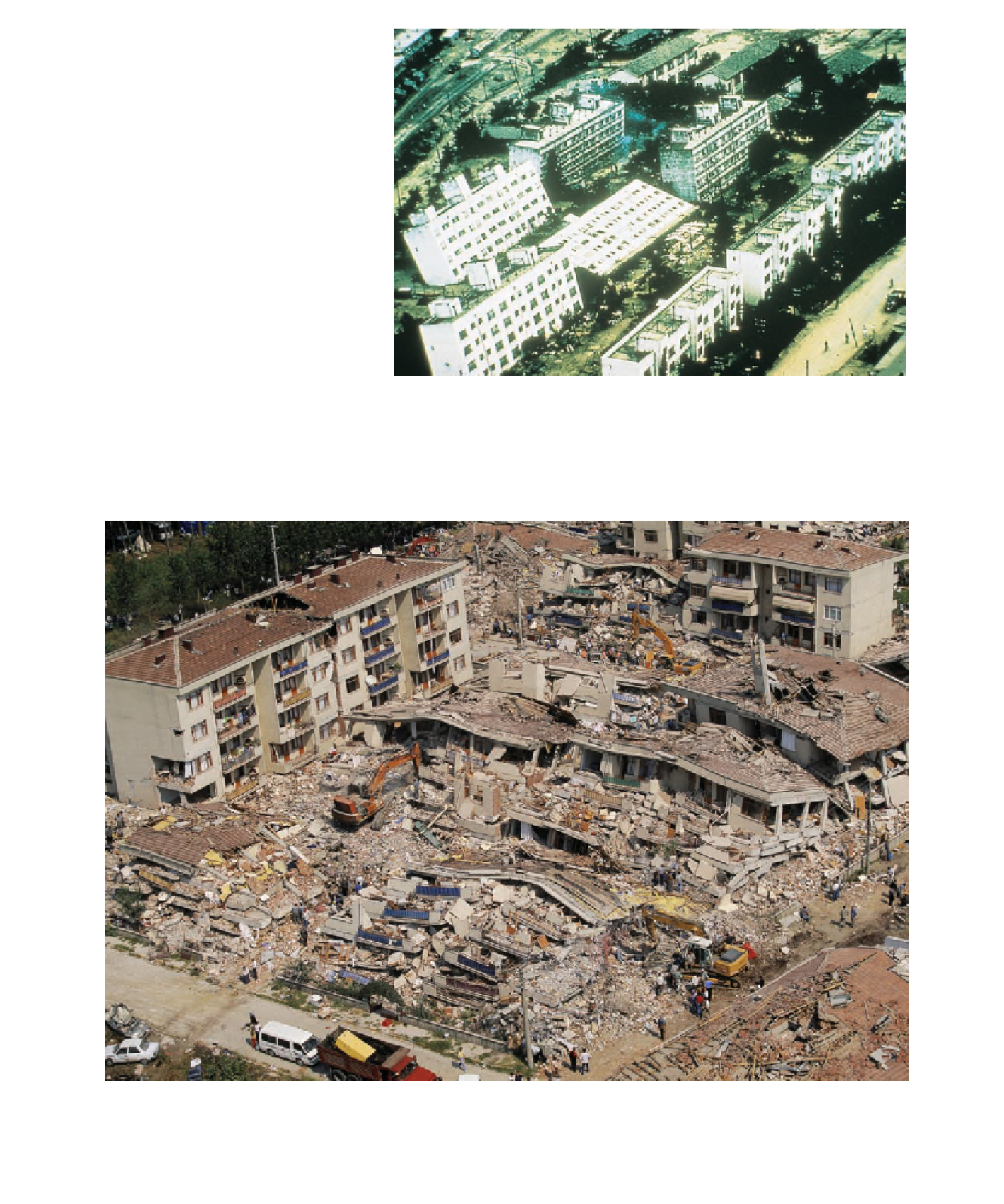Geology Reference
In-Depth Information
resulting from liquefaction are Niigata,
Japan, and Turnagain Heights, Alaska. In
Niigata, Japan, large apartment buildings
were tipped to their sides after the water-
saturated soil of the hillside collapsed
(
Figure 8.14). In Turnagain Heights,
Alaska, many homes were destroyed
when the Bootlegger Cover Clay lost all
of its strength when it was shaken by the
1964 earthquake (see Figure 11.18).
Besides the magnitude of an earth-
quake and the underlying geology, the
material used and the type of construc-
tion also affect the amount of damage
done. Adobe and mud-walled struc-
tures are the weakest and almost always
collapse during an earthquake. Unrein-
forced brick structures and poorly built
concrete structures are also particularly
susceptible to collapse, such as was the
case in the 1999 Turkey earthquake in
which an estimated 17,000 people died
(
◗
◗
Figure 8.14
Liquefaction The effects of ground shaking on water-saturated soil are
dramatically illustrated by the collapse of these buildings in Niigata, Japan, during a 1964
earthquake. The buildings, designed to be earthquake resistant, fell over on their sides
intact when the ground below them underwent liquefaction.
◗
Figure 8.15). The 1976 earthquake in
◗
Figure 8.15
Ground Shaking Most of the buildings collapsed or were severely damaged as a result of
ground shaking during the August 17, 1999, Turkey earthquake, which killed more than 17,000 people.

Search WWH ::

Custom Search